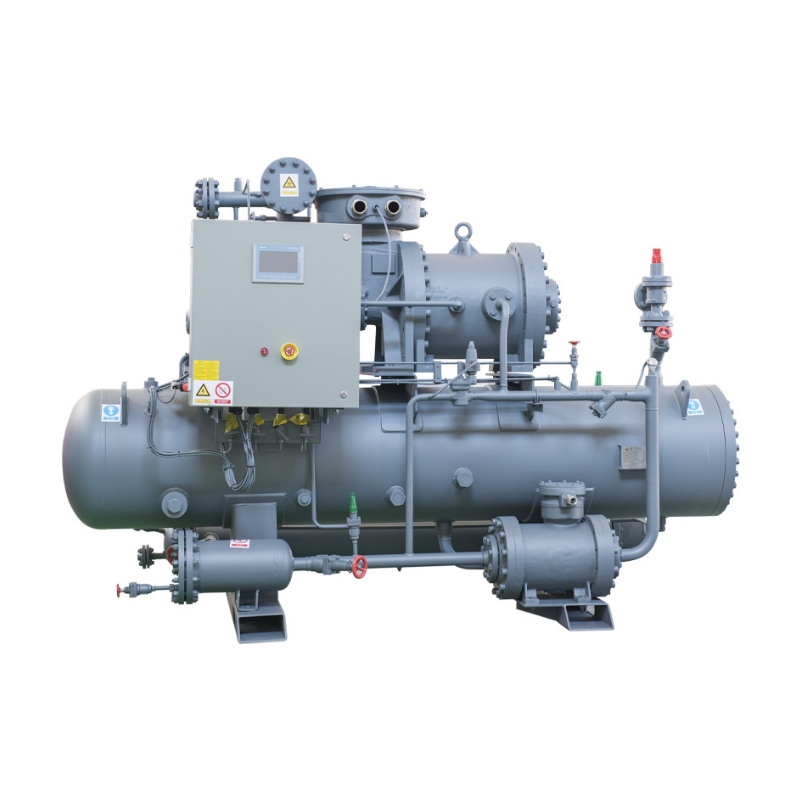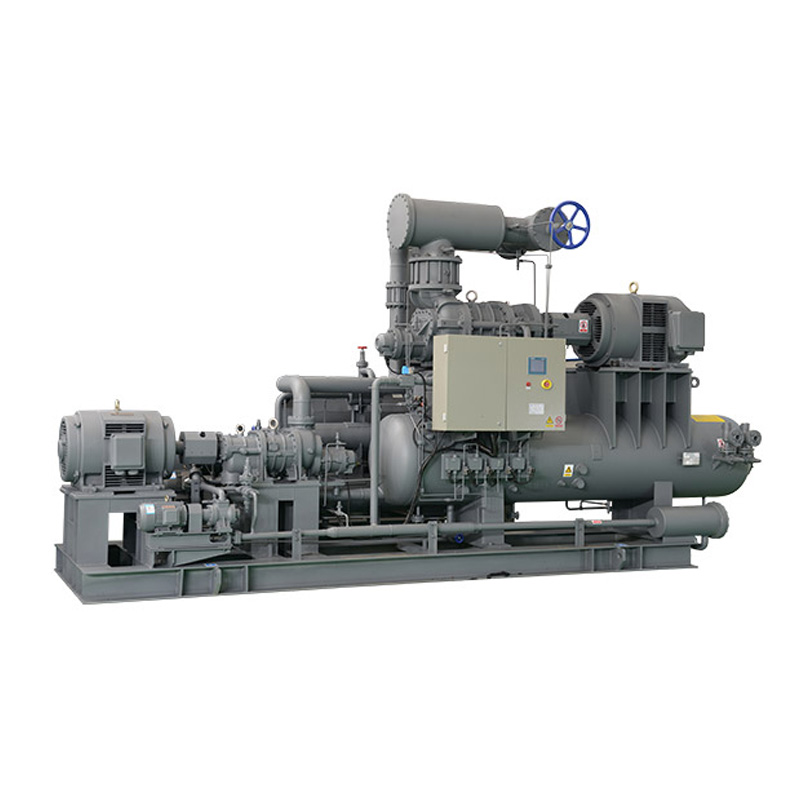Au cours des dix dernières années, la réfrigération industrielle a beaucoup changé. Les prix élevés de l’énergie, les règles écologiques strictes et les besoins accrus de nombreux domaines ont poussé ce changement. Le nouvel équipement permet d'économiser de l'énergie, les commandes intelligentes surveillent tout et les unités faciles à cultiver s'adaptent rapidement. Tout cela garde également la planète à l'esprit et fait fonctionner les plantes sans pause.

If you need to keep up in this fast world, team up with a top player. MOON-TECH conduit en technologie intelligente et ajustements personnalisés. Des systèmes de compresseurs à vis semi-hermétiques aux installations à ammoniac à deux étapes, ils sont conçus pour les travaux difficiles. Leurs unités travaillent dans le monde entier dans des camions à chaîne froide, des usines alimentaires, des lignes de fruits de mer et plus encore. Ils donnent une aide complète au projet et un soutien solide pour le fix-it.
Tendances dans la réfrigération industrielle moderne
Industrial refrigeration moves quick to match tight power rules and daily work loads. Top changes bring strong compressors, build-it-fast units, and clever watch tools. These cut bills, let you add more later, and keep cooling steady.
Shift Toward Energy-Efficient Compressor Systems
People want systems that use little power but cool a lot. New setups must cut running costs and hit world power marks.
A big step is semi-hermetic screw compressors. The Unité de compresseur de réfrigération à vis semi-hermétique works well from -40°C to +7°C. It links many compressors side by side. This lets you change cooling power on the spot and run auto controls. Costs drop, and cooling stays even.

Speed-change drives help too. Compressors slow down or speed up with the job. Power use fits the need exactly. Off-peak times save a bunch of electricity. Parts last longer because starts and stops feel gentle.
Emphasis on Modular and Skid-Mounted Solutions
Plants want quick setup and simple fixes. Ready-made packs and skid units sell fast now. They cut work on site.
Le Unité de compresseur à vis à deux étages séparée de type ouvert shows this well. It shines in cold jobs. High-stage and low-stage compressors start one after the other. Oil feeds by pressure gap. Cooling power adjusts easy. You slide it into old or new plants with little mess.

These packs grow with your work. Small food line or huge cold warehouse, they fit and add on later.
Integration of Smart Control and Monitoring Systems
Today’s cooling does more than push cold air. It adds brainy controls. You see and tweak the system all the time.
Digital screens give live numbers, spot problems, and send reports to the cloud. The semi-hermetic screw unit has this built in. You watch from far away and fix before big stops.
Auto runs save power and cut hand work. In meat or fish rooms where cold must stay, smart boxes keep temps right even when loads jump.
What Role Does Environmental Sustainability Play in System Design?
Green thinking sits in every part of new cooling builds. From pick of fluid to end-of-life parts. Tight world laws and company goals drive this.
Adoption of Low-GWP Refrigerants and Eco-Friendly Practices
Low-GWP fluids are normal now. MOON-TECH looks at the job and picks the best fluid and layout. They build the right cooling plan. As folks care more for the earth, safety, and saving power, MOON-TECH made CO2 systems. They led big CO2 use and pushed better store cooling at home and abroad.
Units run natural fluids like CO2 (R744) and ammonia (R717). These cool strong and hurt the air little if handled right. Gear must match these fluids to follow rules and stay green long term.
Focus on Heat Recovery and Waste Reduction Technologies
Green means more than fluid. Catch waste heat from hot compressor gas or water loops. Use it for wash water or room heat. Plants save power this way.
Tight seals and watch tools stop fluid leaks. Even tiny cuts add up. Less gas escapes, air stays cleaner, and the system runs better.
Compliance with International Environmental Standards
Following rules sparks new ideas. MOON-TECH keeps ISO14001 green marks in all making steps. Every unit meets world earth cares and stays tough for years.
How Have Performance Demands Changed Across Industrial Sectors?
Cooling jobs grew bigger and change quicker. Meat lines or cold trucks need steady cold under wild loads and rough spots.
Increased Demand for High-Capacity, Continuous Operation Units
Round-the-clock plants need tough compressors. The Unité de compresseur de réfrigération à vis à étage unique de type ouvert fits this. It moves air from 285 to 14,000 m³/h. You pick the setup you want. It handles high, middle, or low cold without wasting power or room.

Customization Based on Application-Specific Requirements
Each field needs its own touch. Cold rooms differ from fish chill or drink cool. MOON-TECH checks the job details and picks fluid and system. They make the best fit. From fluid match to auto level or oil split ways, custom builds raise work and lower risk in special spots.
Enhanced Reliability Under Harsh Operating Conditions
Units face salt air, shakes, and big temp swings. Strong metal, smart layouts, and sealed parts keep them going. Hard factory tests prove they last. More up time, fewer fix stops.
Why Is Two-Stage Compression Gaining Popularity?
Cold jobs below zero grow common in fast freeze or quick chill. Two-stage compression wins for power save at low temps.
Improved Efficiency at Low Evaporation Temperatures
Two steps split the push. Less heat stress each time. The Unité de compresseur de réfrigération à vis composé à deux étapes de type ouvert gives high COP below -25°C. Perfect for deep cold. Lower hot gas temps save oil and cut wear. Fix times stretch out.

Better Oil Management and System Balance
Cooling between steps pulls oil out better. Less oil travels down and clogs heat swaps. Smart oil return keeps lube right without hand help. System runs non-stop.
Expanded Application Range Across Temperature Zones
One two-stage unit covers many rooms. Blast freeze at -40°C to hold at -5°C. No need for extra setups. Saves floor space and adds control.
What Are the Key Trends in Global Market Demand?
Cooling turns into must-have for world food moves. Buyers want full packs that show clear numbers, stay solid, and follow green laws.
Growth of Cold Chain Infrastructure in Emerging Economies
New lands build cold chains fast to save food and cut loss after pick. Cold Chain Logistics tops the use list for new cooling tech. Big chance in Southeast Asia, Africa, Latin America. Government cash helps put in fresh green cooling.
Increasing Preference for Turnkey Engineering Solutions
Buyers like one-stop shops. Design, build, set up, and back up from one team. Less mix-up between sellers. Project stays on track.
Rising Expectations for Technological Transparency
Folks want to see live stats. Up time, power use, fluid left. All on screen or phone far away. Clear view builds trust. Small tweaks stop big bills early.
FAQ (questions fréquentes)
Q1: What makes two-stage compressors more efficient than single-stage units?
A: Two-stage compressors cut push per step. Hot gas stays cooler. Power use drops in low cold.
Q2: Are modular refrigeration systems suitable for large-scale operations?
A: Yes. Modular systems start small and grow big. Fit food shops to giant cold barns.
Q3: How do smart controls benefit industrial refrigeration users?
A: Smart controls watch live, send fix alerts, share cloud notes, and run auto. Less stop time, lower power bills.

